America’s Stonehenge | A Historical Site Shrouded in Mystery
In the heart of the woods atop a granite-studded hill in Salem, New Hampshire, stands a site shrouded in legend – America’s Stonehenge.
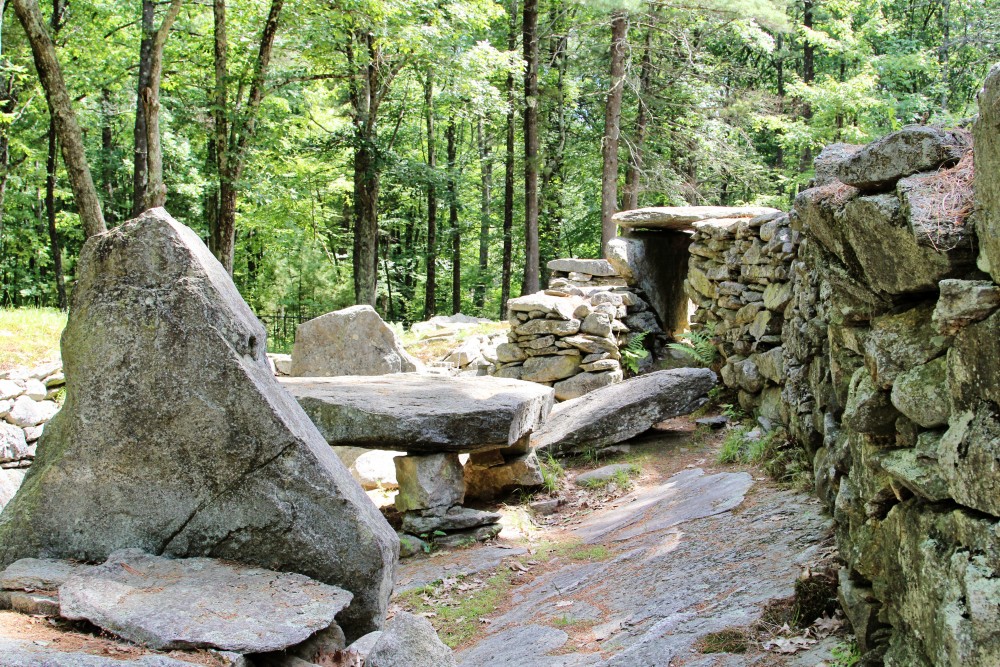
Nestled in the woods in Salem, New Hampshire, this collection of stone structures dubbed America’s Stonehenge remains a puzzle.
Photo Credit : Alyson HorrocksOnce known as the roadside attraction Mystery Hill, America’s Stonehenge in Salem, New Hampshire, includes mysterious rock formations, a warren of man-made caves and chambers, and stone walls that stretch across the hilltop. The origin and purpose of the structures have been hotly debated among scholars and amateur sleuths for years, raising far more questions than answers.
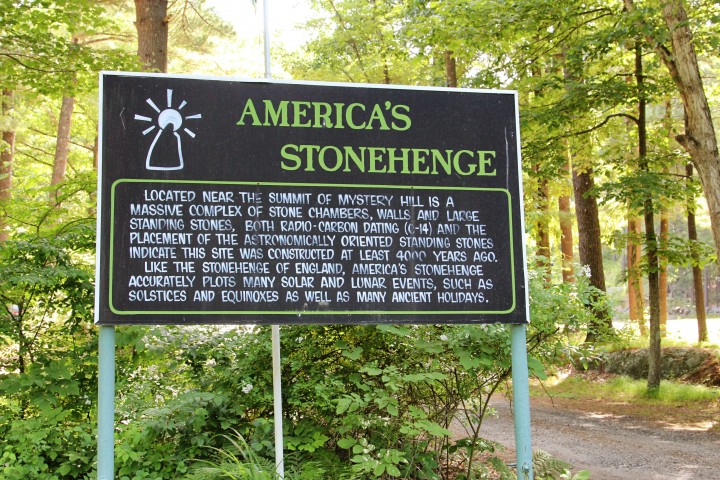
Photo Credit : Alyson Horrocks
We visited America’s Stonehenge two days after their annual summer solstice celebration to explore the ancient mysteries locked deep within this site.
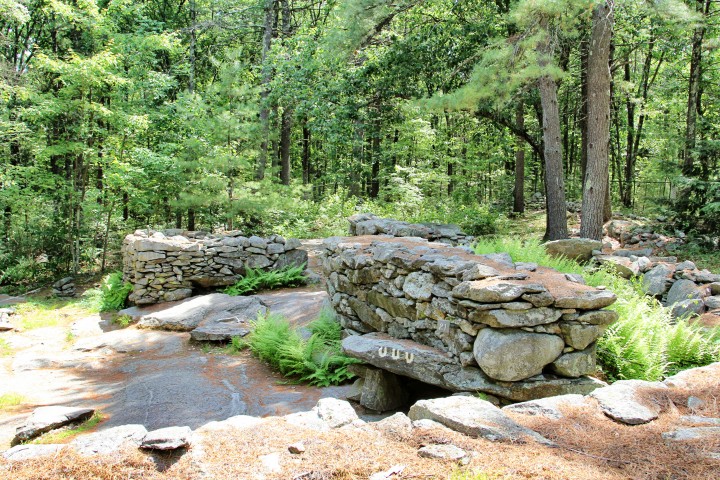
Photo Credit : Alyson Horrocks
Could this winding maze of stone structures have been built by an ancient culture for ceremonial purposes? There’s no doubt that a native civilization made use of this area, as fragments of bowls and stone tools have been uncovered during archeological excavations. Evidence of large fire pits, possibly used in the manufacture of pottery, have also been uncovered, and carbon dating suggests parts of the site may have been constructed 4000 years ago.
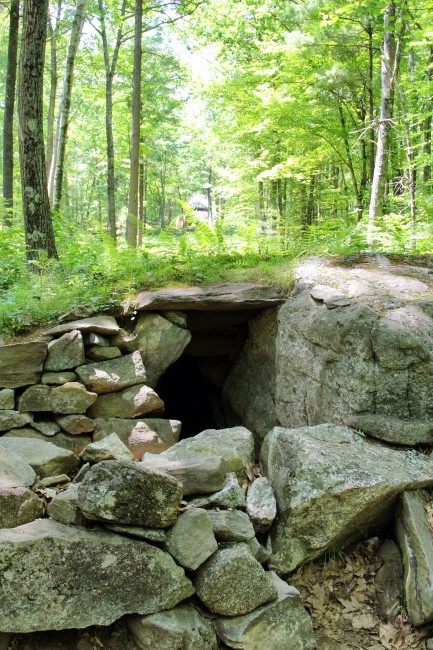
Photo Credit : Alyson Horrocks
Or perhaps pre-Columbian, migratory Europeans constructed this place for religious rituals and ceremonies. The Celts, Norsemen, Mediterraneans, and other European populations have all been considered as builders of this stone oddity. While no hard evidence has been found to support this assumption, it does spark one’s imagination.
And then there’s the sacrificial table. One of the most curious relics at America’s Stonehenge, this slab of granite, weighing over four tons, has a groove scored into its perimeter to collect liquid and drain it off the side. Did an ancient people perform sacrificial rites here? Or was this simply a colonial device, used to press fruit or make lye soap?
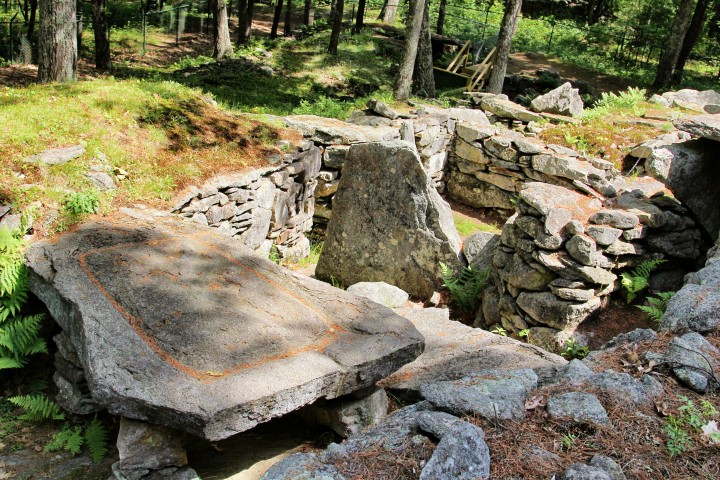
Photo Credit : Alyson Horrocks
Just below the slab, a speaking tube – a narrow channel carved through stone – links to a cramped chamber. Could someone have once crouched there and used the tube to project his voice out from beneath the sacrificial table in a deity-like fashion?
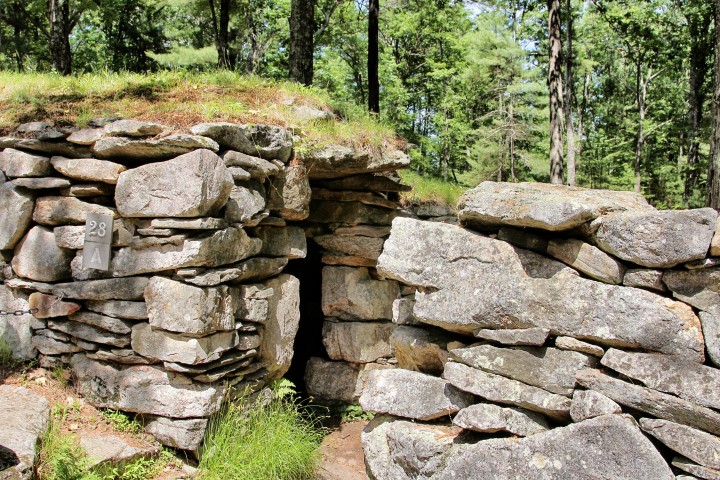
Photo Credit : Alyson Horrocks
And what about the giant astronomical calendar made of standing monoliths? The stones appear to align with solar and lunar occurrences that could relate to either farming or ceremonial events. Some scholars have said the alignment is a coincidence, while others claim it truly is a calendar.

Photo Credit : Alyson Horrocks
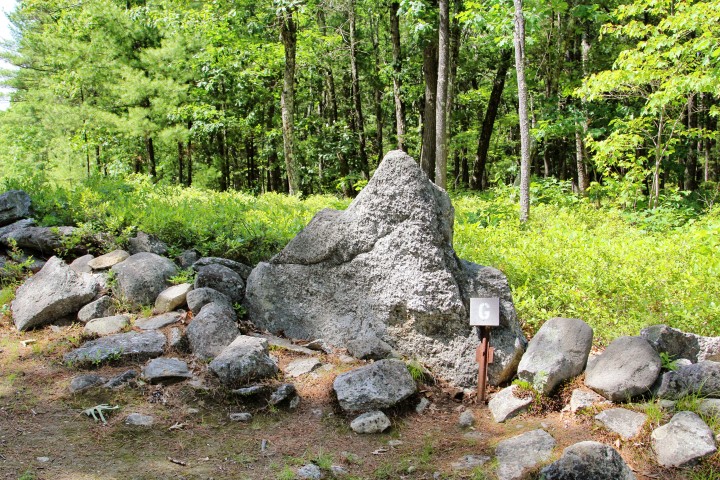
Photo Credit : Alyson Horrocks
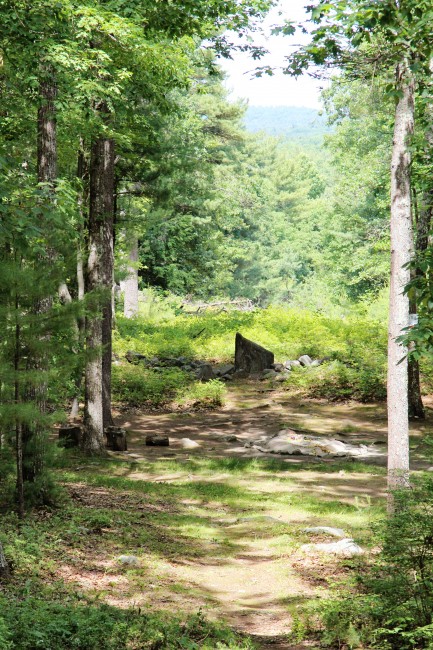
Photo Credit : Alyson Horrocks
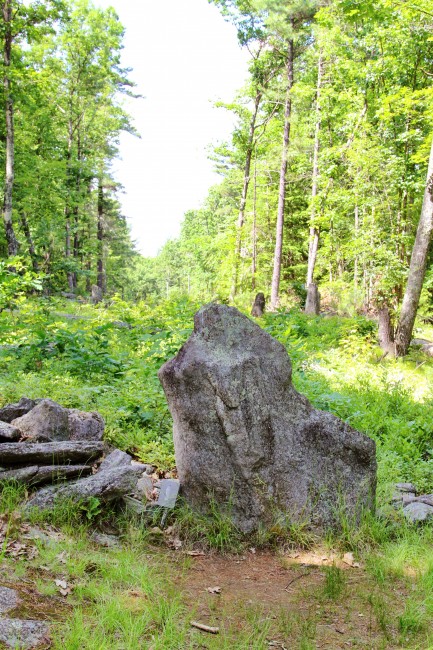
Photo Credit : Alyson Horrocks
A peaceful, undemanding hike with panoramic views of lush forests and hills fading into the distance, the walk around the astronomical trail was my favorite part of the day. I paused to linger at each stone, consumed in thought about the generations of people who have passed over the rocky surface of this hill on which I stood. I pondered the lives of native people thousands of years ago, painstakingly forming vessels out of the clay deposits nearby. I wondered when Europeans first gazed out on this same view.
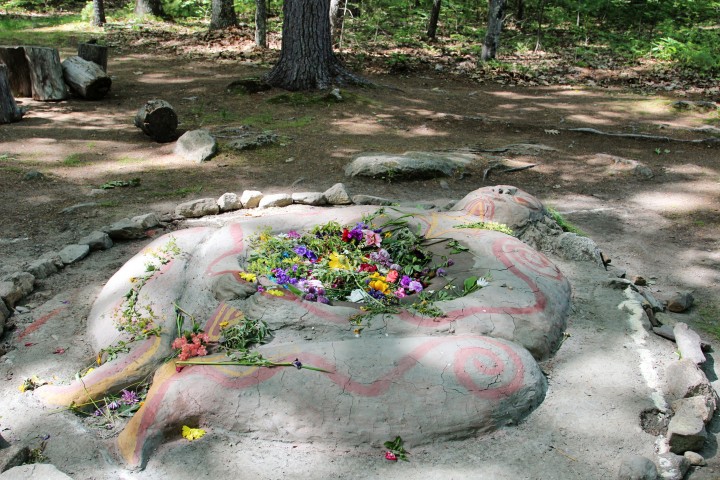
Photo Credit : Alyson Horrocks
The myths and legends surrounding this place are conflicting and fanciful. The enchantment of this hill is that certain answers will likely never come and our imaginations are free to conjure another new tale to add to those already existing. The magic is in the mystery.
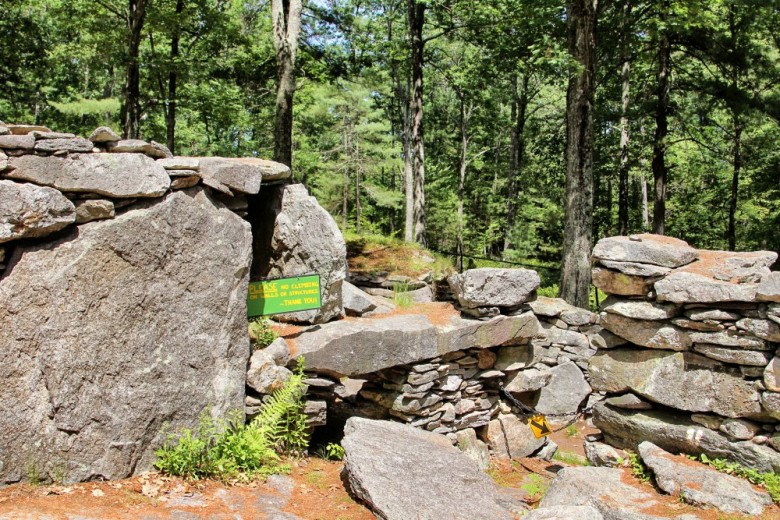
Photo Credit : Alyson Horrocks
So what is the true origin of America’s Stonehenge in Salem, New Hampshire? We can’t answer those questions, so you’ll have to decide for yourself. Be sure to share your favorite theory section in the comment section below!
Have you ever visited America’s Stonehenge?
This post was first published in 2014 and has been updated.
SEE MORE:
Lake Winnipesaukee Mystery Stone
Legend of Purgatory Chasm
Madame Sherri’s Castle Ruins | A Legendary Site
Alyson Horrocks
A New England lifestyle blogger and freelance writer, with a passion for photography, Alyson Horrocks spends most of her time traveling the six-state region chronicling all that New England has to offer. From quintessential small towns and farms to the hustle and bustle of Boston, her site, New England Living, is stuffed with images that convey the connection she feels to the area.
More by Alyson Horrocks

